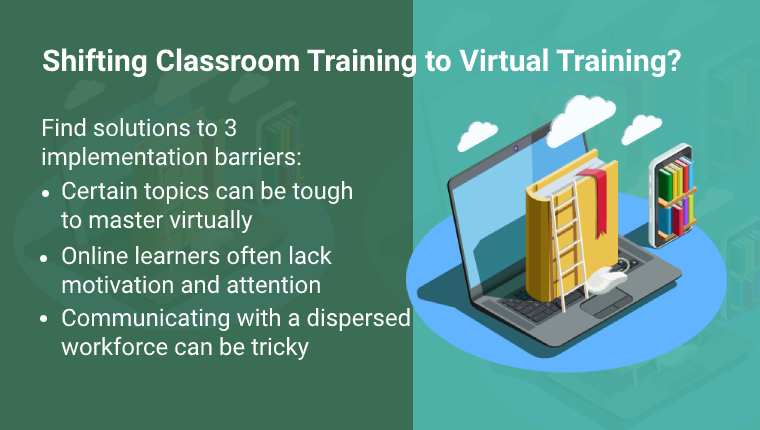Implement LMS to Improve the Quality of Training

When organizations expand and hire employees who are dispersed globally, using traditional methods to train employees such as classroom sessions or synchronous online training may not work. A classroom training session involves bringing employees from different locations at one place with additional travel and accommodation worries. Synchronous learning indicates adjusting the different time zones employees are in, and bringing them together for a session. To avoid these challenges, many organizations have adopted the asynchronous model of online learning to teach their employees.
Adopting an asynchronous model helped learners learn at their convenience and the bonus was they could access courses anytime and anywhere. But it came with its own set of issues – how do you create a repository from where courses can be accessed by learners and how do you track and measure dispersed learners taking the course? The solution came in the form of a Learning Management System or LMS.
This is a software application to administer, regulate, track, and deliver learning. An LMS delivers courses to learners, administers tests and assignments, tracks their progress, and manages the records of learners. An LMS can improve the quality of your online training and will certainly invigorate your training. Here is a list of benefits that an LMS can bring:
Tracking learning: Helps track how many learners have taken the training and how well they have performed.
Real time reporting: Accurately tracks learners’ progress and provides detailed reports, in real time.
Prompts learners: Informs employees when they have completed the last training and notifies them when the next course is due.
Learning on demand: Gives access to training material 24X7 so that learners are free to revisit the material when they have doubts or want to reinforce their learning.
Learning anytime, anywhere: A responsive LMS allows employees to access the training material on their mobile devices in the form of mobile apps or videos that offer learners the convenience of learning whenever and wherever needed.
Streamlines the learning process: The LMS provides automated approvals and notifications, streamlining the learning process and provides learners a direction.
Employees are in control of their learning: With an LMS, employees feel that they are in control of their learning and since the learning is self-paced, it provides a sense of empowerment to learners.
Boosts employee performance: Courses can be deployed as and when required to meet training demands to improve employees’ performance.
Ensures uniform multi-site deployment of training: The LMS helps deploy training in multiple sites, ensuring there is uniformity in learning.
Ensures nobody misses the training: Since the LMS gives learners the flexibility to access learning at their convenience, they can fit learning into their busy work schedule which significantly improves their training uptake.
Tracks learner training activities: Managers can keep track of who has taken the training and who has not, and all the information is available at a single source. It can also be used to deploy quizzes and surveys to learners which helps gauge how much employees have understood, and surveys provide valuable feedback.
The benefits indicate that implementing an LMS will help align learning to the organization’s needs. In fact the modern day LMS comes with a user interface that can align with various e-learning strategies such as gamification, mobile learning, microlearning, and social learning.
There is no doubt that an LMS improves the quality of training. Let us further see how an LMS can transform three essential training areas.
Compliance training: Compliance training is important in jobs that require certification, and are essential in highly regulated industries such as banking, finance, healthcare, and manufacturing. Compliance training is mandatory for all employees in these sectors. An LMS helps track employees who have taken the training and who have not, especially in large organizations. The LMS becomes crucial especially when organizations have to be ready for a compliance audit.
Safety training: For safety training, an LMS allows organizations to hand out large amounts of information in a controlled way, monitor training, and analyze the results through evaluation and follow-up sessions. An LMS helps maintain records and analyze statistics which in turn helps refine the training session. The LMS acts as a medium for employees to provide feedback on safety violations and request clarifications on rules and directives. This helps in enhancing the training with valuable employee insight.
Sales training: As mentioned earlier, training hosted on the LMS gives learners access anytime and anywhere, and can even be viewed on mobile devices. This helps salespersons who are always on the move, to access the training on mobile devices at their convenience. It is easier to keep them informed of the latest products, services, and product updates by hosting them on the LMS and notify salespeople about it to ensure they have the latest information at their fingertips.
Implementing an LMS for your training needs ensures that you can rollout training that is quick, effective, and consistent and helps you measure the impact of your training instantly. Do share your views.





